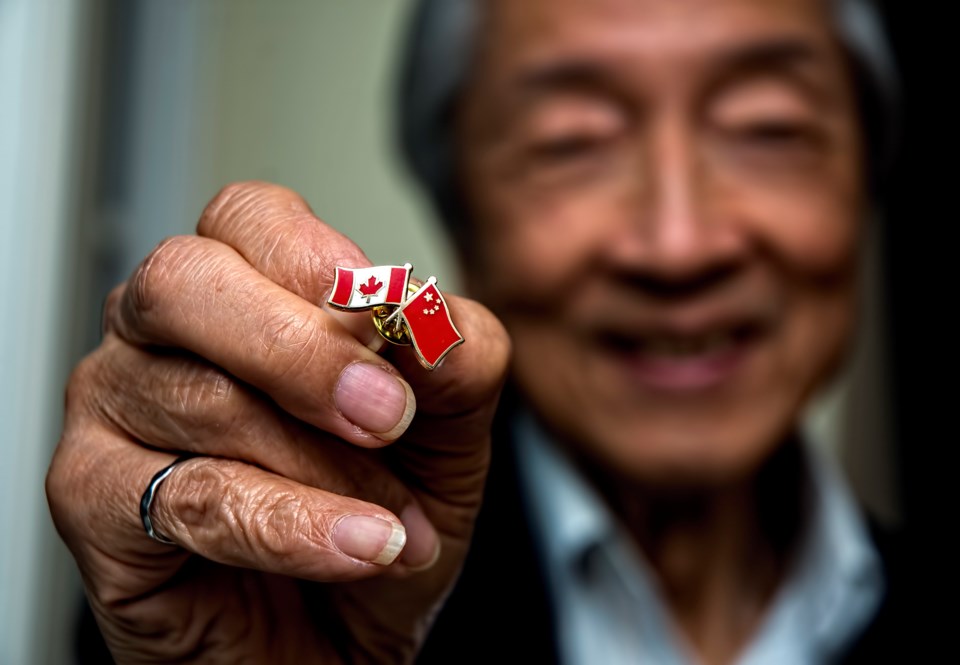As the U.S. increases tariffs on Canadian goods, creating greater uncertainty for local businesses, some argue it’s time for Canada to re-evaluate its approach to China and reset a relationship that has been frosty since the 2018 arrest of Huawei Technologies Co.’s former CFO.
Others caution that a worsening trade relationship with the United States doesn’t necessarily need to push B.C. and Canada closer toward the country’s second-biggest trade partner.
“I think the way we’re being treated by our neighbour to the south is a wake-up call,” said David Fung, vice-chair of the Canada China Business Council (CCBC), based in West Vancouver.
“We have to engage [more] with China. Being the world’s largest economy on a purchasing power parity basis, it is crazy for us not to.”
The B.C.-China relationship soured after China’s response to the arrest of Meng Wanzhou, including the detention of two Canadians and trade retaliations.
Ottawa then launched an Indo-Pacific Strategy in 2022, aiming in part to reduce Canadian businesses’ reliance on China. B.C. followed with its Trade Diversification Strategy in 2023.
B.C. exports to China declined from a peak of $8.89 billion in 2021 to $8.49 billion in 2022 and $7.94 billion in 2023. They rebounded to $8.5 billion last year, representing 15.6 per cent of B.C.’s total exports — down from 16.4 per cent in 2021.
Fung said B.C. is missing out on China’s massive market, which imported goods worth US$2.59 trillion last year.
Greater engagement at the government level is urgently needed, he said, to open doors for B.C. businesses in China, helping them strengthen their positions and build resilience against challenges such as the current threat of U.S. tariffs.
“China treasures high-level contact, and when Canada stopped having the high-level contact, we lost out,” said Fung.
B.C. officials’ last engagement with China dates to 2015, when then-premier Christy Clark and international trade minister Teresa Wat led a trade mission to China. At the national level, then-foreign minister Mélanie Joly visited China in 2024 — the first official visit since 2018.
More recently, in June, Prime Minister Mark Carney had a phone call with the Chinese Premier Li Qiang, during which they “exchanged views on bilateral relations,” according to the federal government.
Fung pointed to Australia, which has a rosier relationship with China and describes trading with China “central to Australia’s future prosperity” on its government website. In 2023, Australia exported US$120 billion of goods to China, accounting for 32.5 per cent of its total exports.
“If we could achieve 30 per cent of our exports going to China, the U.S.’s leverage over Canada would be a lot less,” said Fung.

China no easy fallback plan despite U.S. pressure
However, trade experts say Canada’s strained relationship with the U.S. doesn’t make China more attractive, and there are still significant risks to deepening supply chain integration, mainly due to geopolitical fractions.
“A lot of the trade with the U.S. is in manufacturing, especially the auto sector, whereas most of the exports in China are resource-based, so China can’t replace the U.S. as a trading partner,” said James Brander, Asia Pacific professor emeritus in international business and public policy at the University of British Columbia (UBC).
More importantly, trust between Canada and China has eroded since 2018 and will be hard to rebuild, according to Werner Antweiler, associate professor and chair in international trade policy at UBC.
“China and Canada appear to be on rather different geopolitical trajectories,” he said.
One tension point to rebuilding ties is Canada’s 100-per-cent surtax on China-made electric vehicles — a policy that took effect last October, following a similar surtax in the U.S.
In retaliation, China imposed a 100-per-cent surtax on Canadian canola oil and meal, and a 25-per-cent tax on seafood and pork. This week, China announced a preliminary anti-dumping duty of 75.8 per cent on Canadian canola seed, which will come into force on Thursday, August 14.
“Canada had to do that to stay sort of in full compliance with its agreement with the United States... and of course, that’s a big negative from China’s point of view,” said Brander.
Meanwhile, concerns and suspicions have been raised for foreign investment from China in Canada, and Canada has largely focused on containing China’s influence in the minerals and metals sector, according to Antweiler.
Other issues, including China’s support of Russia during the Russia-Ukraine war and Canada’s criticism of China’s human rights record also add to frictions that pose risks of supply chain disruptions for B.C. businesses.
“Both China and Canada will be working to reduce those frictions over time, but they won’t go away easily just because Canada’s having trouble with the U.S.,” said Brander.
Antweiler added that a “premature” re-engagement with China could even jeopardise ongoing trade talks between Canada and the U.S., as the relationship with China will likely be part of those discussions.
Fung, however, said he believes B.C.’s trade with China is “peanuts” compared to its trade with the U.S., and remains far from creating any real dependency.
“Canada has to be agile…if we only engage with countries that we share values with, then we stay home,” he said.
“And when we trade, we end up sharing values.”
As the B.C. government works to expand trade partnerships with other countries – highlighted by Premier David Eby’s visit to Japan, Malaysia and South Korea in June, Brander said these markets will not be able to match the scale of the U.S. and Chinese markets.
“Canada is going to have less trade for a while in total, and more internal trade flows to try to replace some of the international trade loss,” he said.
“It’s not going to be a disaster; It’s negative, for sure.”


